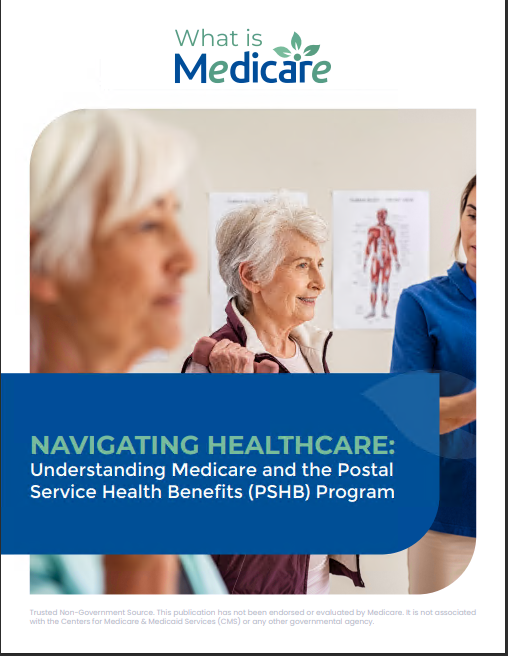Key Takeaways:
-
Medicare in 2025 has updated premiums, deductibles, and out-of-pocket limits, which are essential to budget for as a beneficiary.
-
Understanding the costs associated with each Medicare part can help you make informed decisions about your healthcare coverage.
Breaking Down Medicare Costs in 2025
Medicare’s costs evolve each year, and 2025 brings some notable changes to premiums, deductibles, and other expenses. If you’re enrolled or planning to enroll, knowing these details ensures you’re financially prepared.
Medicare Part A: Hospital Insurance
Medicare Part A covers inpatient hospital stays, skilled nursing facilities, and some home health services. While many beneficiaries don’t pay a premium due to sufficient work credits, others might face a monthly cost.
-
Premiums: If you worked fewer than 30 quarters, you pay $518 per month. For 30-39 quarters, the cost is $284 monthly. Understanding your work history is key to determining whether you’ll owe these premiums.
-
Deductible: The inpatient hospital deductible is $1,676 per benefit period. This applies each time you’re admitted after a 60-day gap from your last stay. Planning for multiple admissions can help manage these costs.
-
Coinsurance: Costs for longer stays can add up. For hospital stays beyond 60 days, you’ll pay $419 per day up to 90 days. Lifetime reserve days cost $838 per day. Skilled nursing facilities charge $209.50 daily for days 21-100, highlighting the importance of supplemental coverage for extended stays.
Medicare Part B: Medical Insurance
Part B covers outpatient care, doctor visits, preventive services, and durable medical equipment. Costs for Part B are rising in 2025, so it’s vital to account for these expenses.
-
Monthly Premium: The standard monthly premium is $185. Higher-income beneficiaries may pay more based on the Income-Related Monthly Adjustment Amount (IRMAA). Keeping your income below certain thresholds can help avoid higher premiums.
-
Annual Deductible: The deductible has increased to $257. Once this is met, you’ll typically pay 20% of approved costs for covered services, making it important to budget for routine and unexpected medical care.
Medicare Part C: Medicare Advantage Plans
Medicare Advantage, or Part C, offers an alternative to Original Medicare. Costs can vary widely depending on your plan, location, and the benefits included. While premiums are often stable or slightly lower in 2025, out-of-pocket limits and copayments may differ.
-
Out-of-Pocket Limits: The maximum in-network limit is $9,350, while combined in-network and out-of-network costs cap at $14,000. This cap can provide peace of mind for those with extensive healthcare needs.
-
Additional Costs: Most plans include prescription drug coverage and extras like vision or dental, but the specifics depend on the plan you select. Reviewing these options during Open Enrollment ensures you’re getting value for your money.
Medicare Part D: Prescription Drug Coverage
Part D helps with the cost of prescription medications. In 2025, new rules aim to make prescription drugs more affordable for beneficiaries.
-
Out-of-Pocket Cap: For the first time, there’s a $2,000 annual cap on out-of-pocket drug costs. This provides significant relief for those with high medication expenses, reducing financial stress.
-
Deductible: The maximum deductible is $590. Being aware of this upfront cost allows for better planning of your medication expenses.
-
Monthly Premiums: These vary by plan but are expected to average around $46.50. Checking plan formularies ensures your medications are covered.
Other Costs to Consider
Late Enrollment Penalties
If you delay enrollment in Part B or Part D when first eligible, you may face penalties:
-
Part B: A 10% premium increase for each 12-month period you delay enrollment. This penalty is permanent, so timely enrollment is critical.
-
Part D: A penalty based on how long you went without credible prescription drug coverage. Avoiding these penalties can save you significant money in the long run.
Supplemental Coverage (Medigap)
While Medigap policies aren’t part of Medicare, they help cover costs like deductibles, copayments, and coinsurance. Premiums vary based on your age, location, and the plan you choose. Considering a Medigap plan can be especially useful if you anticipate high healthcare costs.
Planning for Annual Changes
Medicare costs are reviewed annually. It’s wise to revisit your coverage during the Medicare Open Enrollment Period (October 15 – December 7) to ensure your plan meets your needs for the upcoming year. Changes in premiums, deductibles, and covered services can impact your budget and access to care.
Ways to Minimize Costs
-
Coordinate with Medicare: Enrolling in both Medicare and supplemental plans can help lower your overall costs. Ensuring plans work together effectively can prevent surprise expenses.
-
Utilize Preventive Services: Medicare covers many screenings and vaccines at no cost to you, helping catch potential health issues early. Taking advantage of these services keeps you healthier and reduces long-term costs.
-
Compare Plans Annually: Shop around during Open Enrollment to ensure your plan offers the best value. A little research can lead to significant savings.
-
Stay Within Networks: For those on Medicare Advantage plans, sticking to in-network providers reduces your out-of-pocket costs significantly.
-
Monitor Medication Costs: Reviewing your Part D plan annually ensures your prescriptions remain affordable. Formularies can change year to year, so staying updated is crucial.
Considerations for Special Situations
If you’re nearing retirement or turning 65, understanding Initial Enrollment Periods (IEP) is crucial. Missing these windows can result in penalties and delays in coverage. Additionally, beneficiaries with higher incomes should plan for IRMAA adjustments, as these can increase Part B and D premiums.
For those eligible for Medicaid or other assistance programs, it’s worth exploring if you qualify for help with premiums, deductibles, or drug costs. Programs like Extra Help can significantly reduce your expenses.
What This Means for You
Medicare costs in 2025 might seem overwhelming, but understanding them empowers you to make confident healthcare decisions. By knowing your premiums, deductibles, and potential out-of-pocket expenses, you can budget effectively and focus on your health. Taking the time to review your options ensures that your coverage aligns with your needs and financial situation.







